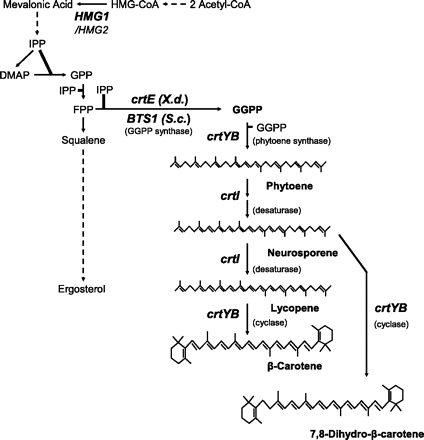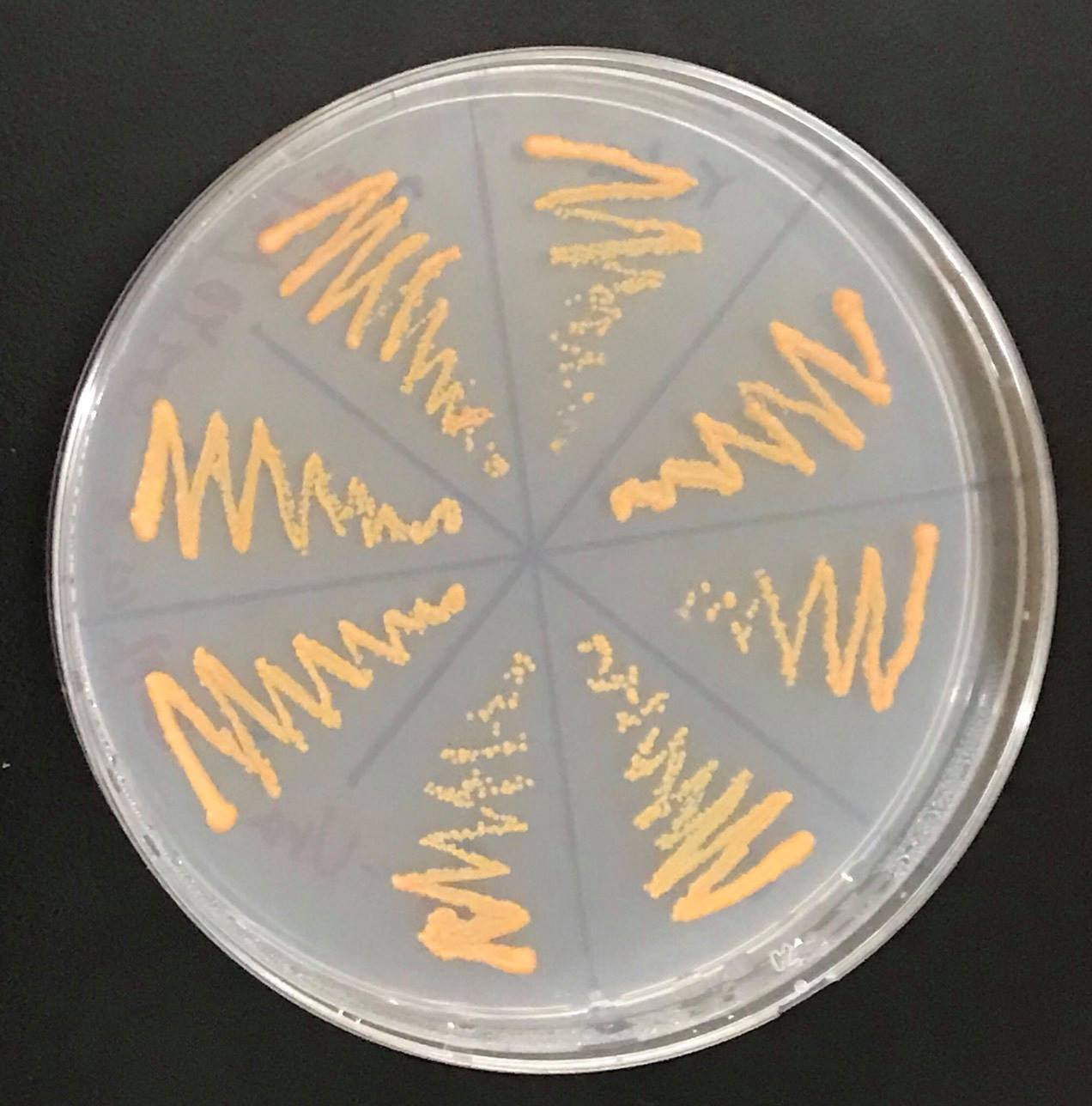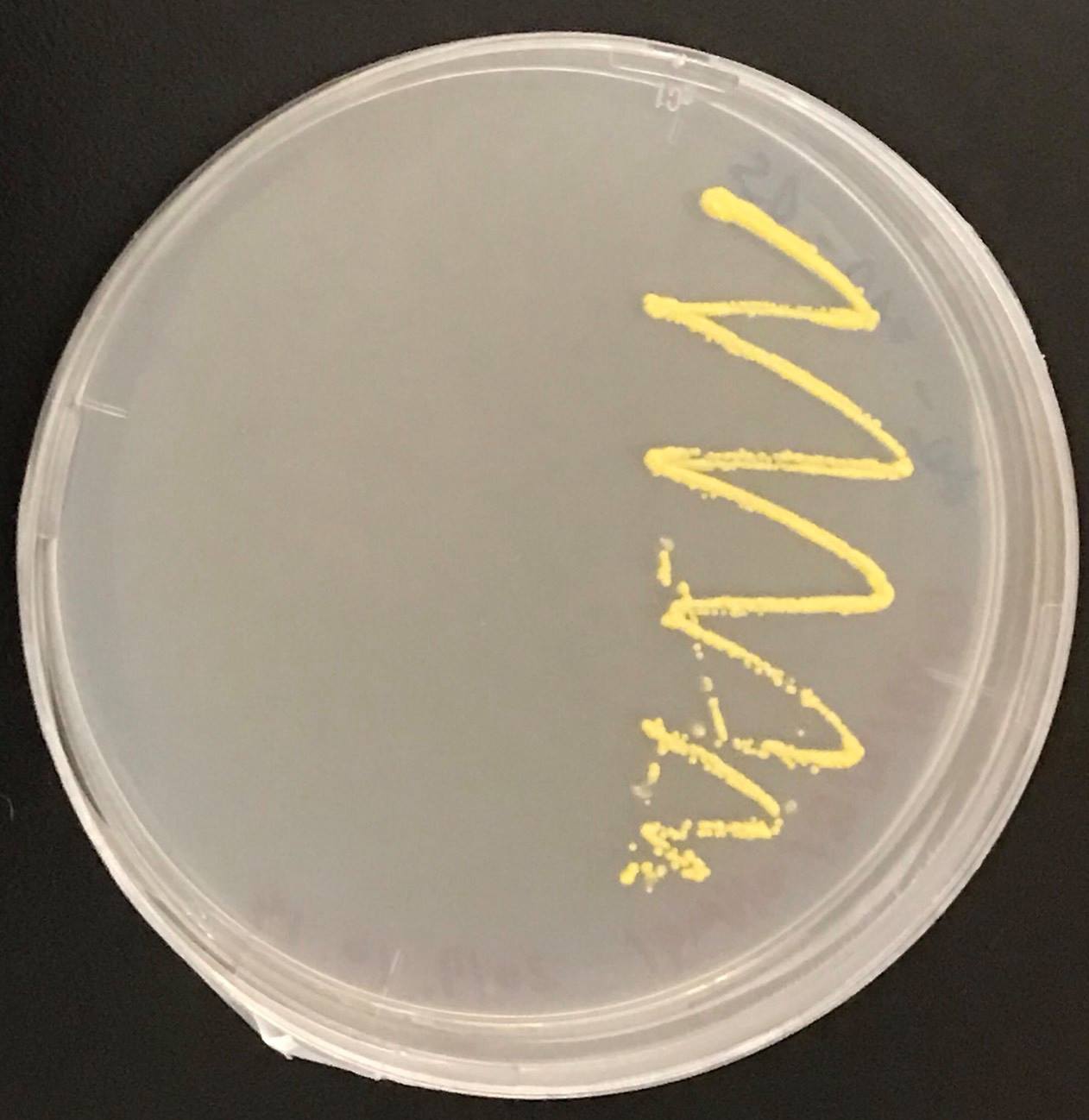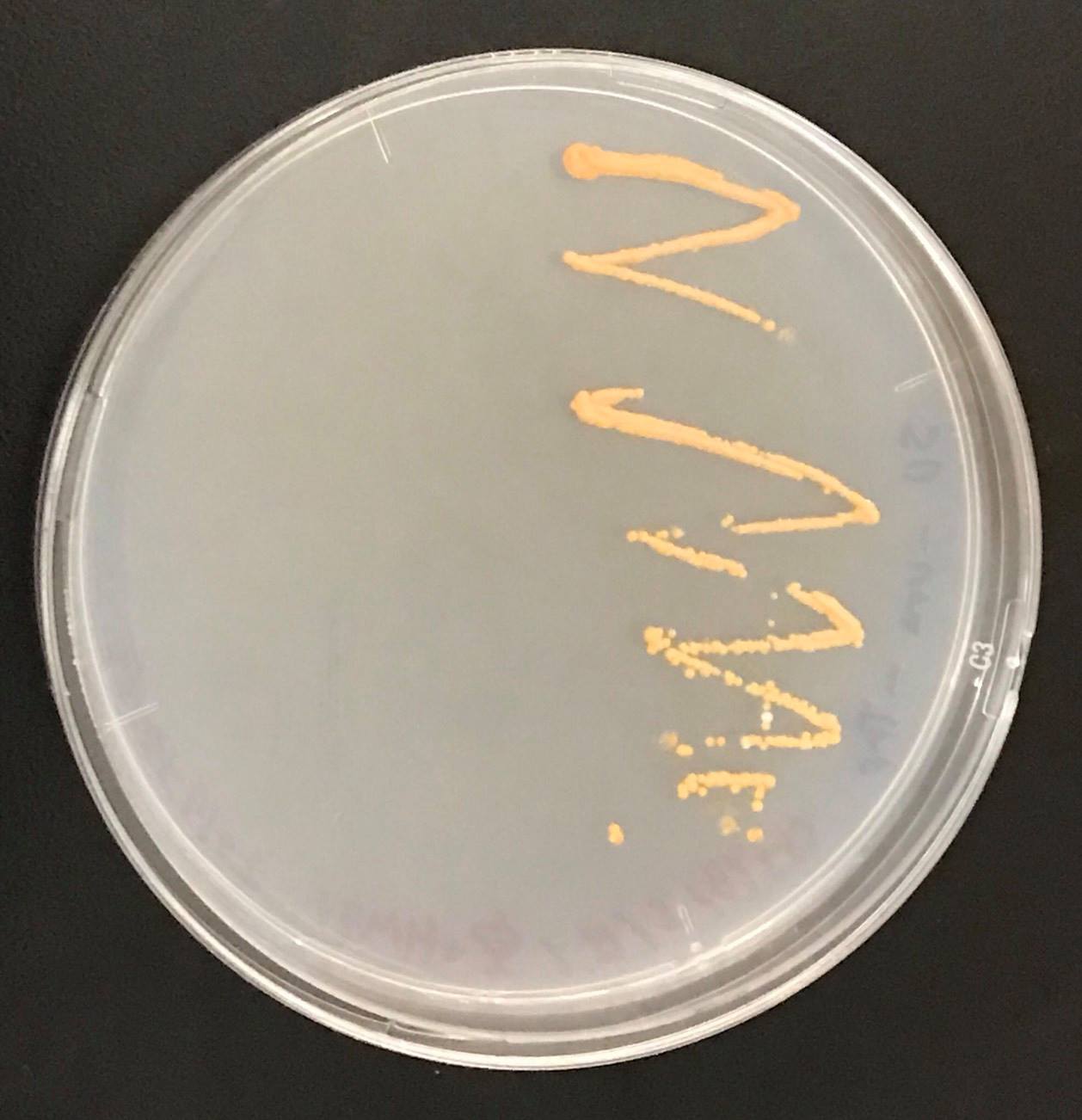Nagahama
Characterization
We have characterized BBa_K849000.

HMG1 encodes HMG-CoA reductase and catalyzes conversion of HMG-CoA to mevalonate, which is a rate-limiting step in sterol biosynthesis.
Because mevalonate is synthesized, it is easy to flow to subsequent pathways.
Therefore,β-carotene production increase.
Color of colony was changed yellow from orange when tHMG1 was inserted into S. cerevisiae synthesizing carotenoid.(Fig.2,3,4)
This result showed that tHMG1 was inserted.
tHMG1 has a characteristic of changing color of S. cerevisiae. This result to be due to the fact that as a result of massive synthesis of mevalonate, β-carotene was produced in large amount.
In order to investigate whether tHMG1 increased β-carotene productions, color of S. cerevisiae and β-carotene were compared. It is considered that the amount of β-carotene synthesized increased because the color of yeast introduced tHMG1 was closed the color of 1μg of β-carotene dissolved in 1 ml of hexane.
Reference
[1]Verwaal R, Wang J, Meijnen JP, Visser H, Sandmann G, van den Berg JA, van Ooyen AJ (2007) High-level production of beta-carotene in Saccharomyces cerevisiae by successive transformation with carotenogenic genes from Xanthophyllomyces dendrorhous. Appl Environ Microbiol 73(13):4342–4350






